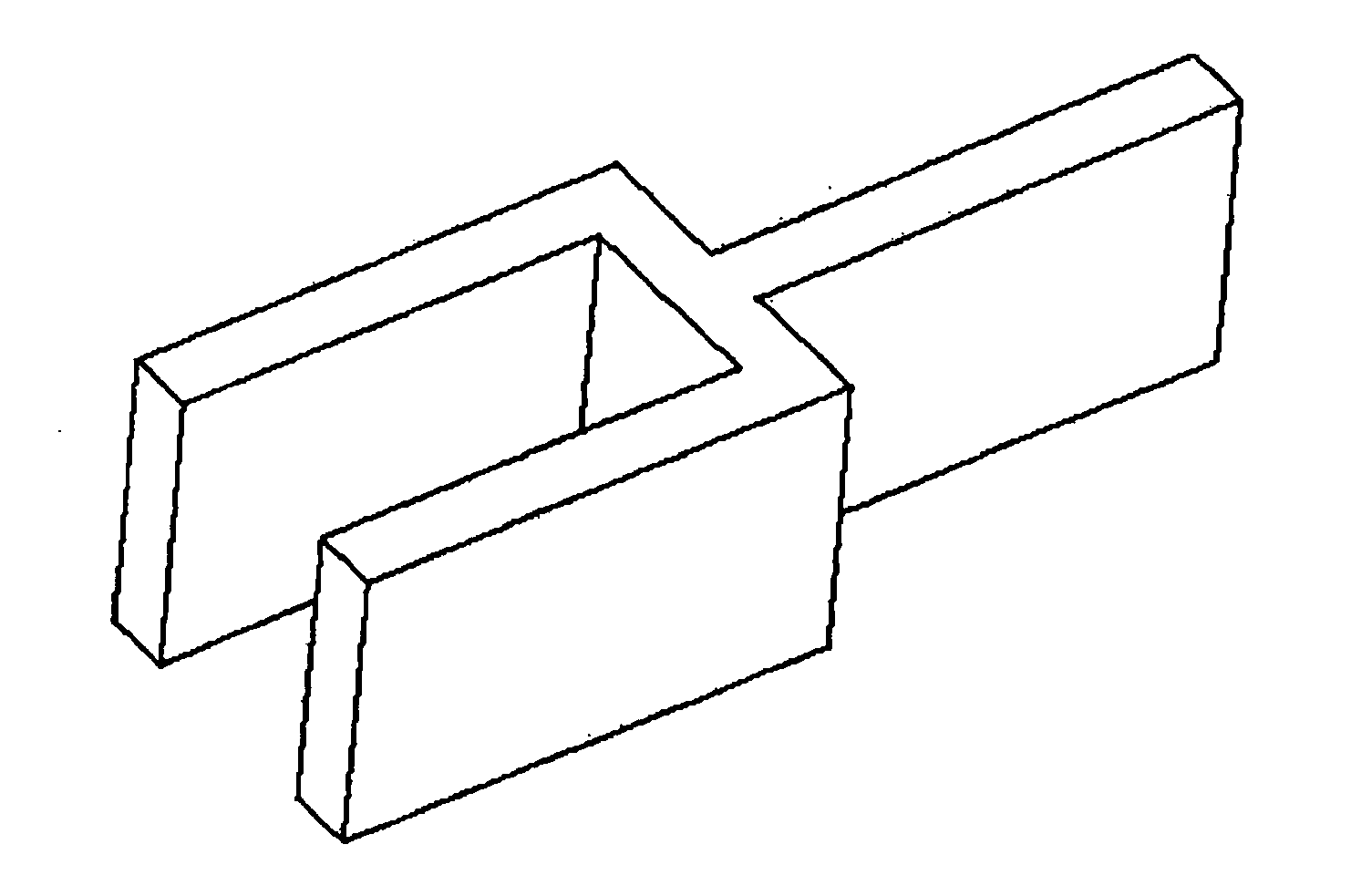Analysis of boundary and/or initial value problems in thin objects and spaces
a thin object and space technology, applied in the field of boundary value problem analysis methods, can solve the problems of computational burden and difficult exact computation
- Summary
- Abstract
- Description
- Claims
- Application Information
AI Technical Summary
Benefits of technology
Problems solved by technology
Method used
Image
Examples
example 1
[0056] To illustrate the foregoing method, consider a simple engineering analysis problem:
∇2u=0 in Ω
having boundary conditions u|Γ=û, where Ω is a cuboid (as in FIG. 2) of dimension (1, 1, 2H), H<0.5, and the exact solution is u=û=x+y+z.
[0057] Since the cuboid domain is a simple one, the skeleton (medial axis) can be computed to machine-precision accuracy. Since the exact solution is linear, and since the trial function (Equation (8)) is linear, the computed solution ucomputed should closely conform to u. TABLE 1 illustrates the results in the form of the maximum error e=max∥u−ucomputed∥ over the entire skeletal mesh for various values of H.
TABLE 1He = max∥u − ucomputed∥0.253.21e−150.13.02e−150.051.65e−15
Note that as H grows smaller—i.e., as the cuboid grows thinner—the error grows smaller.
example 2
[0058] Consider a slightly more complex problem:
∇2u=−1 in Ω
[0059] having boundary conditions u|Γ=0, where Ω is the “tuning fork” shown in FIG. 4a (and having a skeletal mesh computed as in FIG. 4b). Since exact solutions for the posed problem are not available, the computed solution can be compared to a full 3-D finite element mesh solution calculated by use of FEMLAB (Comsol Inc., Burlington, Mass.), a popular CAD / CAE commercial software package. TABLE 2 compares the maximum value of the computed field on the skeletal mesh against the FEMLAB solution for two different values of H, and also presents the approximate CPU time for the two methods. Note that the CPU time for the skeletal mesh includes the time needed to calculate the medial axis and generate the mesh thereon.
TABLE 2H3-D FEMSkeletal Mesh0.2max∥ucomputed∥1.41e−31.7e−3CPU Time (s)7.24.10.1max∥ucomputed∥3.1e−33.3e−3CPU Time (s)18.44.3
Note from TABLE 2 that the loss in accuracy arising from use of the skeletal mesh is sm...
example 3
[0060] In the foregoing experiments / examples, the numerical axes were computed to a high degree of accuracy. Thus, the question remains whether computed solutions would still be acceptable if the medial axes were approximated. As per the observations in Hammerlin, G., Hoffmann, K. H., Numerical Mathematics, New York, Springer-Verlag (1991), it is expected that data perturbations would have minimal effect on the computed solution owing to the underlying elliptic nature of the partial differential equations noted at the outset of this document (as well as others). This is confirmed in the following experiment.
[0061] Consider the L-shaped bracket of FIG. 5a, which is subject to the Laplacian problem u=û=x+y+z. Then consider if each point on the exactly-computed medial axis (and its mesh) was artificially perturbed by a maximum magnitude of ε (as an example, see FIG. 5b). TABLE 3 compares the computed solution for the perturbed mesh against the exact solution.
TABLE 3e = max∥u − ucomp...
PUM
 Login to View More
Login to View More Abstract
Description
Claims
Application Information
 Login to View More
Login to View More - R&D
- Intellectual Property
- Life Sciences
- Materials
- Tech Scout
- Unparalleled Data Quality
- Higher Quality Content
- 60% Fewer Hallucinations
Browse by: Latest US Patents, China's latest patents, Technical Efficacy Thesaurus, Application Domain, Technology Topic, Popular Technical Reports.
© 2025 PatSnap. All rights reserved.Legal|Privacy policy|Modern Slavery Act Transparency Statement|Sitemap|About US| Contact US: help@patsnap.com



